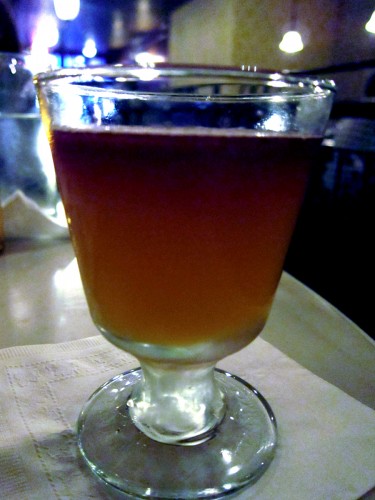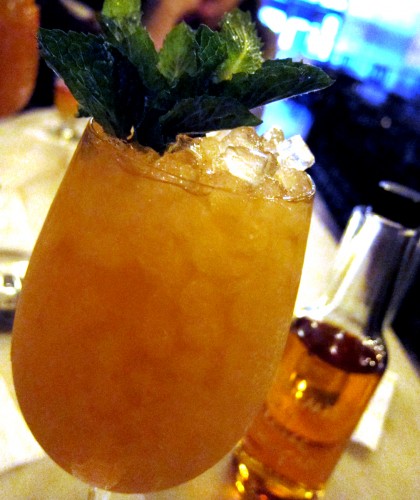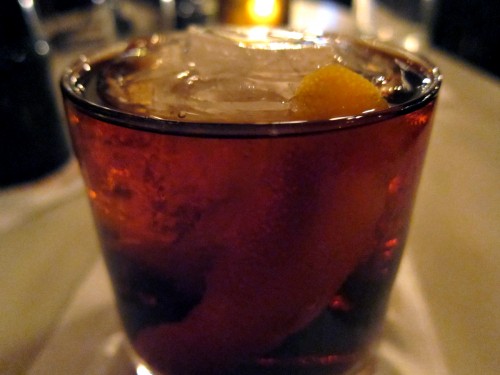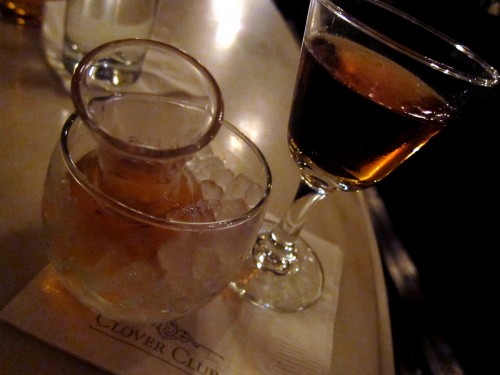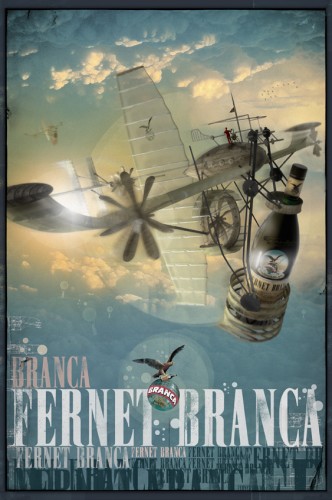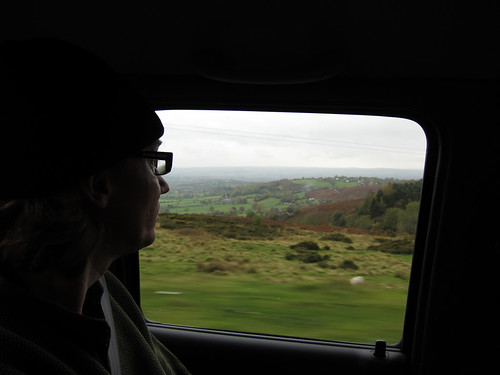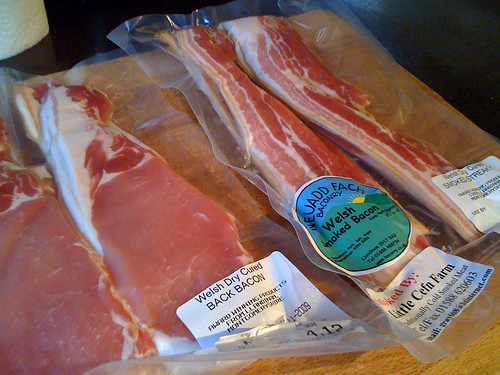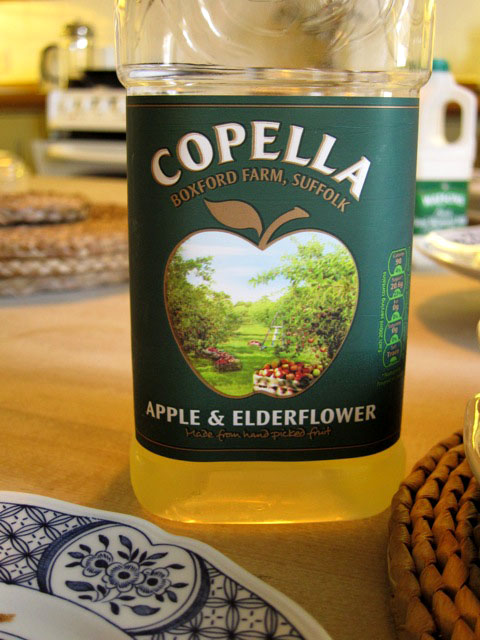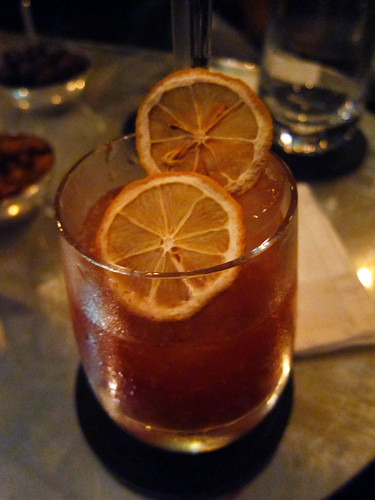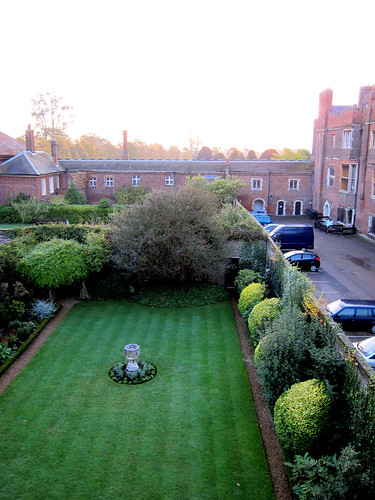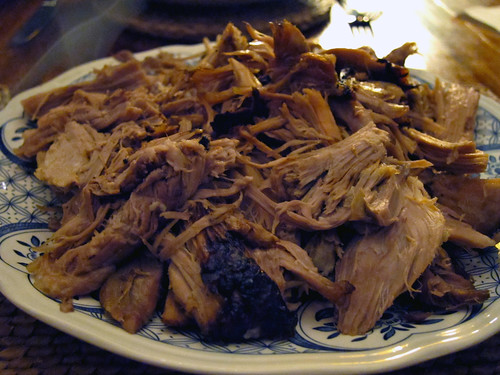New York City, Clover Club & the New York Sour
New York, just like I pictured it! Skyscrapers, and … everything.
Last December Wesly and I finally, FINALLY went to New York, as we had been wanting and threatening to do for years. I wish I had collected a dollar for every time a friend of ours said, “WHAT?! YOU guys have never been to New York?!” It might have paid for the hotel bill. Well, some of it more likely.
How did we like New York? Well, let me put it this way — we’ve already picked out where we’d like to live. That’d be Carroll Gardens in Brooklyn, which is a gorgeous neighborhood, full of places to go and things to do, plus it’s walking distance to one of the best bars I’ve ever been to. (Of course, if money were no object I certainly wouldn’t mind living in the East Village either.) Our first craft cocktail bar experience in New York, in fact, high on my want list — Clover Club, owned by bartender extraordinaire and New York cocktail maven Julie Reiner. An auspicious beginning to our New York drinking, I should think.
We met up with friends who lived in the neighborhood and settled in — neighborhoody, very friendly, less than a dozen seats at the front bar but comfy booths and plenty of tables. I was somewhat agog at the menu, which was voluminous and made me want to try pretty much everything. I ordered something off the menu but then one of our drinking companions ordered something I wasn’t familiar with; “I get this every single time I come here,” he said.
I was a little embarrassed that I did not remember this drink; it was pointed out that the drink appears in the excellent, indispensible tome Imbibe!. (Clearly I need to re-read the book and make some highlights.) It does not appear as a separate, stand-alone recipe but as part of a general entry on sours under the heading “Brandy, Gin, Santa Cruz or Whiskey Sour,” where the general sour of the mid-1800s — “spirits, sugar, water, lemon, ice” — receives a “notable innovation” of a float of red wine,
“to give it what one Chicago bartender called ‘the claret “snap”‘ (in the language of the saloon, red wine was always called ‘claret,’ no matter how distant its origins from the sunlit banks of the Gironde).”
That generic British term for red Bordeaux ended up being used to describe just about any dry red wine, and just about any dry red wine you have on hand will do as long as it’s got some nice fruit to it. I might not use something big and tannic like a Cabernet Sauvignon, but surely a Cabernet blend, Merlot, Syrah, Malbec, or I might even go off the wall sometime and try a jammy Zinfandel.
One sip revealed this to be a stupendous drink, with the wine creating myriad secondary flavors in the sour; I even thought I tasted a hint of absinthe although there was none in the drink, but was perhaps due to hints of licorice among the flavor components of the wine. So simple yet so complex; I’m a big fan of wine in cocktails and haven’t had nearly enough of them.
Do try this drink as soon as you can. I think you’ll fall in love with it as much as I did. Upon my return to Los Angeles and to Bar | Kitchen, one of our favorite haunts, I had the pleasure of being served more of these by former New York bartender Joseph Swifka, who of course made perfect ones, and with one sip brought me right back to Brooklyn.
NEW YORK SOUR
2 ounces rye whiskey
3/4 ounce fresh lemon juice
1/4 ounce rich (2:1) simple syrup (or to taste; use more if your syrup is 1:1)
1 dash orange Curaçao
1/2 ounce dry red wineCombine the whiskey, lemon juice, Curaçao and syrup in a cocktail shaker with ice. Shake vigorously for 10-12 seconds. Strain into a sour glass, then carefully float the wine on top by pouring over the back of a spoon — you want a distinct layer floating on top of the drink, so be careful not to mix the layers. Sip and enjoy.
This was, of course, not the only drink we had at Clover Club — I really wanted to explore that menu, and explore I did. There were a few other concoctions imbibed that afternoon/evening:
The Daisy de Santiago, as collected by Charles H. Baker Jr. and tweaked to perfection by Clover Club — aged rum, lime juice, yellow Chartreuse, dash simple syrup.
The pre-Prohibition era Volstead Cocktails — rye, Swedish punsch, orange juice, grenadine, absinthe.
The eponymous Clover Club cocktail, because how could I not? Gin, dry vermouth, lemon, raspberry syrup, egg white.
I had a bit of Wesly’s Mr. Brown, which seemed an Old Fashionedy version of a Revolver Cocktail — Bourbon, coffee liqueur, vanilla syrup, orange and Angostura bitters, and not nearly as sweet as it sounds. He also had one called Zombies in Stereo — Apple brandy, Calvados, Pommeau, Bonal, yellow Chartreuse, lemon, maple syrup (holy hell).
And because it was on the menu, which it almost never is, I finished with a magnificent Widow’s Kiss …
Dried rose petals did indeed fall from between the pages.
Only I lied, I didn’t finish with that. At that point, I was … well, happy. And as is my wont when I’m happy in a bar, I decided to buy shots for the bartenders and server (and Wesly and me, of course).
Later on Wesly said, “Amazingly enough, you were mostly okay when we left the bar.” We did indeed finally leave the bar, heading back to the subway and to Manhattan, where we were meeting other friends for dinner at a Midtown gastropub. I don’t recall which beer I ordered, but I do recall that it was about 7.8% ABV, that it came in an absurdly large vessel, and then I recall …

